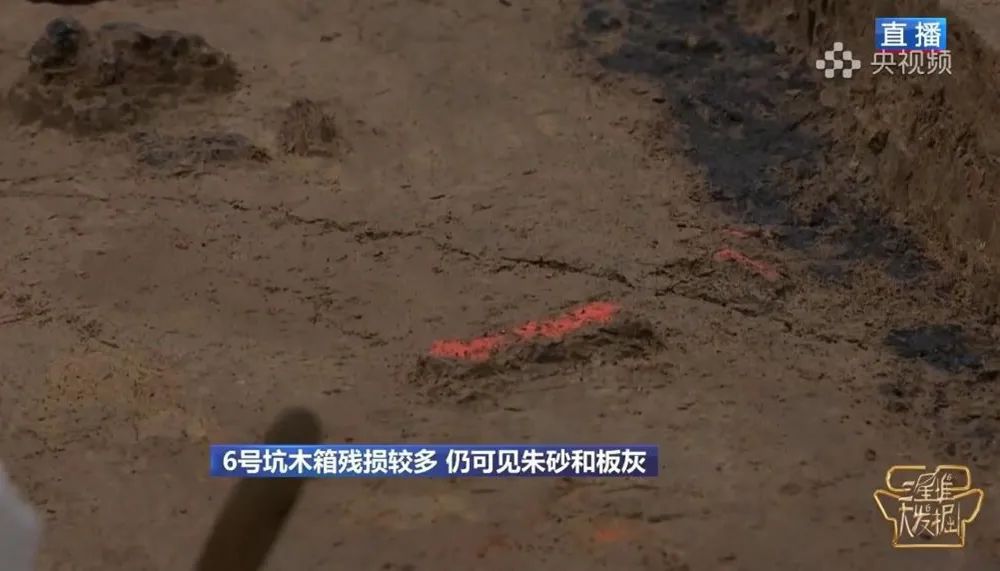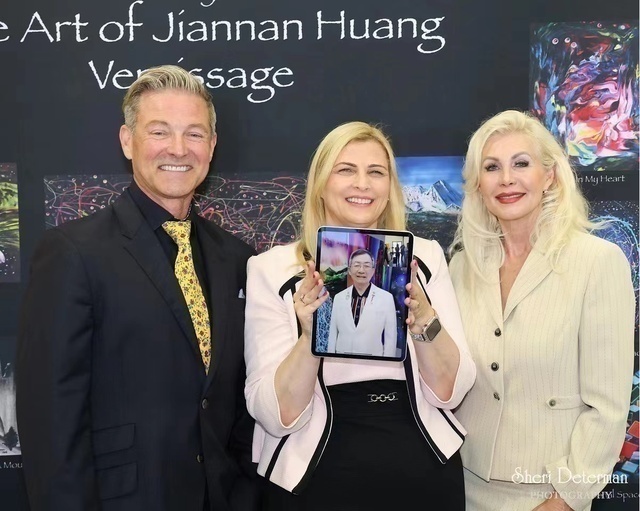Golden masks, "Moonlight Treasure Box" and other "new" treasures such as Samsung Douga are from the sacrifice pit responsible for the Sichuan Archeological Team!
Author:Sichuan University Time:2022.06.19
"
From June 14th, CCTV has broadcast the third season of Samsung Dou's special program "New Discovery of Sanxingdui" for three consecutive days, which once again attracted the attention of the whole people. One by one, the prestigious national treasures continue to bring new expectations to the public.
Among the Sanxingdui 5, 6, 7, and 8 sacrifice pit displayed this live broadcast, Sichuan University's Sanxingdui Archaeological Team cooperated with the Sichuan Provincial Cultural Relics and Archaeological Research Institute, mainly responsible for the excavation of 5, 6, and 7 pits. There are a large number of precious cultural relics in the sacrifice pit, the golden mask unearthed from the No. 5 pit, the mysterious wooden box of No. 6 pits, the turtle -shaped mesh grid of the No. 7 pit, etc. Each one is amazing Essence
Behind these shocking discovery is the silent effort of the Sichuan Archeology.

For this excavation, the School of Archeology and Cultural Expo of our school organized more than ten multidisciplinary teams with more than ten teachers as the core. Nearly a hundred teachers and students participated in the excavation work. The person in charge of the scene was Professor Li Haichao of the Archaeological Expo College.
Since 2020, the Sichuan University archeological team has continued to adhere to the archeological site of Sanxingdui. They have given up on weekends and holidays. They work at least eight hours in the pit every day. At night, various types of unearthed records and materials are also organized.
In order to sacrifice pit cultural relics to better unearthed, archeologists must lie on the mobile platform to clean up the cultural relics. One job is several hours. In order to protect the unearthed ivory, they raced with time and often picked the lights night.
The No. 7 pits held by the Sichuan University Archaeological Team unearthed more than two hundred roots, and thousands of precious cultural relics have been unearthed in 5, 6, and 7 pits.
During the CCTV live broadcast event began on June 14, Professor Li Haichao served as a guest of explanation. Among the 5, 6, and 7 pits that our school is responsible for, No. 7 pits are the largest sacrifice pit. The utensils in the pit are small and exquisite. Among them, the most remarkable "Moonlight Treasure Box" of the turtle -shaped mesh -shaped mesh is called "barbecue rack" by netizens.
According to the current excavation and cleanup situation, the turtle -back grid is a bronze texture on the texture. There is a rectangular frame around the grid. Destruction. The bronze grid on the outside is symmetrical, forming an open -minded structure. The bronze grid is an oval jade inside. Through microscope observation, obvious textile traces were found in the black and red regions of the bronze grid and the gray area of the internal jade. In order to ensure the smooth extraction of the rails, the cultural security personnel cooperate with the on -site archaeological players, first hollow the bottom of the grid, then fix it with a high molecular bandage, and then use the pulley device to slowly hang up. extract.

Turtle -shaped grids have many places that are worthy of in -depth research. Professor Li Haichao said that the bronze grid obviously had a border closing situation, and it was speculated that it might be a trace of imitating bamboo or rope bundling. This kind of closing technology has not been found in the utensils unearthed at Sanxingdui, which can be described as unique. There are also extremely thin bronze thin slices in some areas of the bronze grids. Whether these forging thin pieces are connected with utensils, it is also necessary to further research and verify. In addition, there are two tough bronze bands on the side of the grid, which is likely to bear weight or have other functions. What is even more surprising is that there is a large golden device after extraction below the grid, which is covered with a large part of the soil. Whether this golden device is part of the bronze grid or the grid is overlapping this utensil, it also needs to continue to clean up.
In addition to the turtle -back grid, the "Treasure Treasure of Zhenkeng", which has been searched several times, also has many well -preserved and exquisite jade articles.
In the position of the pit on the east of No. 7, there are piles of jade chisels, and a jade grak with decoration. From the current point of view, there are a lot of jade chisels here, nearly 20 pieces. At present, the pits 5 and 6 have been cut into the laboratory for laboratory archeology. Among them, No. 6 pits found many traces of cinnabar and ash. The No. 5 pit, known as the "Golden Pit", has previously unearthed the largest golden mask discovered so far, as well as more exquisite gold wares and ivory carvings waiting to be excavated.



While discovering the live broadcast of Sanxingdui, the "Celebrity Lecture Hall" 2022 archeological season also ushered in the second lecture. The status of ancient Sichuan in the history of Chinese and foreign cultural exchanges and the history of multi -ethnic cultural interaction, introduced the ancient Shu bronze group with distinctive characteristics and mysterious and strange representatives, and after the Spring and Autumn and Warring States Periods from the Qin and Han dynasties. The Balshu bronze group, which appeared, reproduced the style of Sichuan's "Bronze Kingdom" for the audience.
CCTV, Xinhua News Agency, Surging News, Tencent.com and many other mainstream media have continued to pay attention to and reported that our school has participated in the work of archeological excavation of Sanxingdui sacrifice pits.
Sichuan University Archeology and Sanxingdui have deep roots. Our archeologists have participated in and excavated in Sanxingdui many times. As early as 1934, Professor Ge Weihan and Lin Mingjun were professors at the Museum of Alley (now Sichuan University Museum) (now Sichuan University Museum). Moon Bay carried out archeological excavations, with more than 600 jade, stone, and pottery unearthed. In 1935, Ge Weihan published the "Hanzhou Excavation Briefing" on the 6th volume of the "West China Frontier Research Society", which made a detailed introduction to the archeological excavation process of the Moon Bay. Jade in jade, small pestle, stone sword, stone chisel and other jade artifacts were described. Ge's "Hanzhou Excavation Briefing" is a masterpiece of early research in Sanxingdui culture, and it is also a collection of early research on the relics of the Guanghan site. After the start of the Baocheng Railway in 1953, Feng Hanzheng, a professor at the Department of History at the Department of History of Sichuan University, led the Department of History of Sichuan University and the Sichuan Provincial Museum many times to conduct archeological investigations and trials in Samsung Dou. In 1960, Zhang Xunlian taught the "Archaeological Trip" for 57 students in history. During the period, students led students to the Sanxingdui site in Guanghan for a short -term archeological survey. In June 1961, in combination with teaching, Zhang Xunli and Ma Jixian led a 58 -level student at 58 students to Guanghan ZTE (Sanxingdui) site for archeological survey. Its survey data and research results were published in the 11th issue of "Cultural Relics". Under the advocacy of Feng Hanzheng in 1963, the Sichuan Provincial Museum and the History of Sichuan University History and Archaeological Teaching and Research Group jointly formed the archeological team to formally archeological excavations on the Moon Bay.
In March 1986, the teachers of our school Lin Xiang, Huo Wei, and Li Yongxian led the 1984 undergraduate students in the archeology to Guanghan for internship. They cooperated with the Sichuan Provincial Cultural Relics Management Committee and other units to excavate the Sanxingdui site. Participate in the internship guidance work is Chen Dian and Chen Xiandan of the Sichuan Provincial Cultural Management Association. This time, archeological excavations were carried out in areas of dozens of meters of sacrifice pit discovered later. The biggest harvest was to discover a rich cultural layer and pottery swarm, which greatly expanded the understanding of the cultural connotation of Sanxingdui. It is very important to be very important. Academic significance.
There are currently more than 200 cultural relics of Samsung Dou from our school museum, which are mainly divided into three categories: pottery, jade, and stone artifacts. For more than 90 years since the discovery of Sanxingdui, a generation of Archaeologists from generation to generation and archaeological workers in Sichuan, wearing thorns, asking for thorns, striving forward, and moving forward. In order to create a brilliant contribution of the Bashu civilization from the basin to the world from the basin to the world. Exploring the unknown, revealing the origin, Sichuan University archeologists do not forget their original intentions, adhere to their mission, and continue to work hard to build Chinese characteristics, Chinese style, and Chinese style!

- END -
The Zhangye Cultural Relics Protection Research Institute was awarded the title of advanced units of the Special Survey of Grottoes Temple in the country
China Zhangye News (reporter from Zhangye City Rong Media Center) Recently, the State Administration of Cultural Relics has notified the advanced units and outstanding individuals in the special surve
Creating a new high!Laba blue chip artist Huang Jiannan's 8 works are valued at about 173 million

On June 9th, the BBAX Gallery held the LABA International Art Festival's first blu...